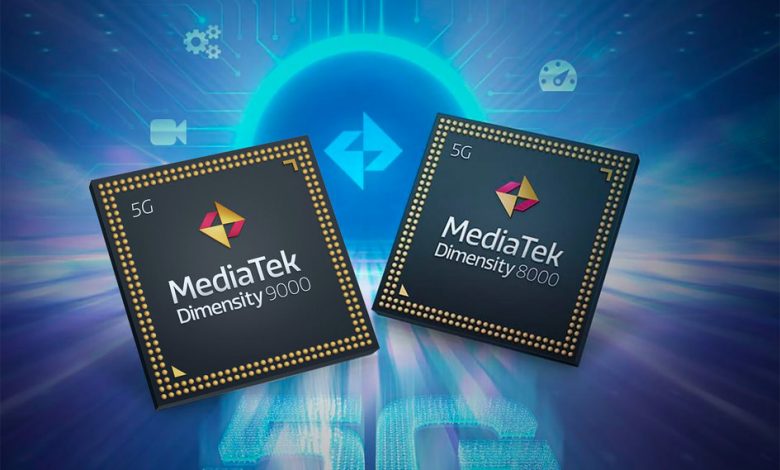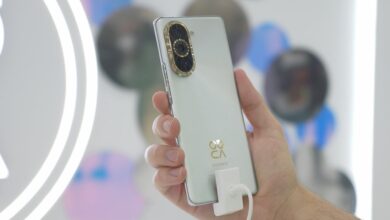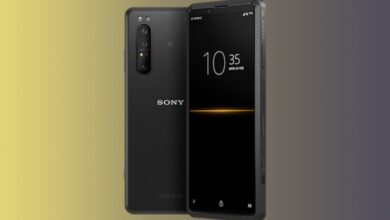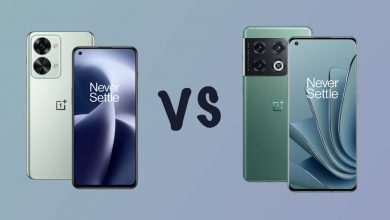MediaTek Dimensity 9000 vs 8000: What’s the difference?

[ad_1]
BARCELONA (Pocket-lint) – MediaTek has revealed two flagship processors just a matter of months apart – the Dimensity 9000 and Dimensity 8000 – so how do these two chipsets differ and why might this matter?
With MediaTek becoming a bigger contender in the market and increasingly the likelihood of its chipsets appearing in your next flagship handset, here are the key differences between the pair in terms of device potential.
Which is more powerful: Dimensity 9000 or 8000?
- Dimensity 9000: 4nm process / Dimensity 8000: 5nm process
- Dimensity 9000: Octa-core CPU with ultra/super/efficiency arrangement:
- 1x ‘Ultra core’: Arm Cortex-X2 to 3.05GHz
- 3x ‘Super cores’: Arm Cortex-A710 to 2.85GHz
- 4x ‘Efficiency cores’: Arm Cortex-A510
- Dimensity 8000: Octa-core CPU with super/efficiency arrangement:
- 4x Super cores’: Arm Cortex-A78 to 2.75GHz (2.85Hz for Dimensity 8100)
- 4x ‘Efficiency cores’: Arm Cortex-A55
- Dimensity 9000: LPDDR5X RAM (@8500Mbps) / Dimensity 8000: LPDDR5 (@6400Mbps)
- Both: 5th gen AI processing unit (APU)
When MediaTek revealed Dimensity 9000 in November 2021, it was like the company had bypassed a generation, going straight to 4 nanometre. The Dimensity 8000, however, seems to fill that gap, as it’s a 5nm process. That should mean the 9000 is slightly more efficient, but as it’s more powerful too that’ll probably be negated in terms of battery life and heat potential.
Speaking of power, this is one of the bigger differences: the Dimensity 9000 has an “Ultra core” in its octa-core setup, whereas Dimensity 8000 is an equal split of four efficiency cores and four more work intensive cores.
Therefore Dimensity 8000 is less powerful, which could have a small impact to high-end compute tasks, but most phone-based tasks aren’t hugely likely to expose such differences – in a way, though, Dimensity 9000 could be thought of more as MediaTek’s gaming phone chipset, whereas the 8000 is likely to appear in a lot more mainstream handsets.
The same can be said of the RAM: Dimensity 9000 is compatible with LPDDR5X, that all-important ‘X’ telling us just how much more capable it is, being able to hand a much greater volume of data per second than the standard LPDDR5 in Dimensity 8000. Still, both are quick!
Cameras
- Dimensity 9000: 320-megapixel resolution support / Dimensity 8000: 200MP
- Dimensity 9000: 8K video support / Dimensity 8000: 4K
- Both: 14-bit raw support
The step-down in power between the two chipsets does present itself in real-world potential, though, which is where it really matters. When it comes to cameras, for example, the Dimensity 9000 is streets ahead of anything else on the market with its support for up to 320-megapixels. The Dimensity 8000 can handle 200MP maximum, which is still a massive resolution, but an example of how the architecture differs.
There’s a similar difference when it comes to video support: 8K HDR can be handled by the Dimensity 9000, while it’s 4K HDR by the Dimensity 8000. Seeing as nobody has an 8K panel on a phone, we don’t think this will matter to many people right now. But, nonetheless, it shows the vast difference in performance potential.
Display
- Full HD resolution: Dimensity 9000 up to 180Hz refresh rate support / Dimensity 8000 to 168Hz
- WQHD+ resolution: Dimensity 9000 to 165Hz / Dimensity 8000 to 144Hz
Refresh rate improvements have become the big ticket item on smartphones in recent years, with many devices now supporting 120Hz refresh. That’s the cap for the Dimensity 8000 when running a WQHD+ resolution panel, improved upon by the Dimensity 9000’s 165Hz support for the same resolution.
Gaming
- Dimensity 9000: Arm Mali-G710 MC10 graphics processor
- Dimensity 8000: Arm Mali-G610 MC6 GPU
The GPU on board each chipset differs, too, with the Dimensity 9000 offering a top-tier Mali G710 compared to the Dimensity 8000’s G610. Architecturally these are one and the same, it’s just that the G610 has lower core counts. Similar to their CPU differentiation, this will make the 9000 the more capable system for gaming-focused devices.
Connectivity
- Both: ‘Release 16’ 5G smartphone modem, Sub-6GHz support
- Both: Bluetooth 5.3 and Wi-Fi 6E support
No key differences here: both Dimensity 9000 and 8000 chipsets support 5G connectivity, though there’s no mmWave offered in the company’s portfolio just yet, so it’s the Sub-6GHz band – but it’s still super-fast.
Both chipsets also support the latest Bluetooth 5.3 protocol and offer Wi-Fi 6E support, again linking into the fastest possible download speeds when connected to a compatible network.
Writing by Mike Lowe.
[ad_2]
Source link




